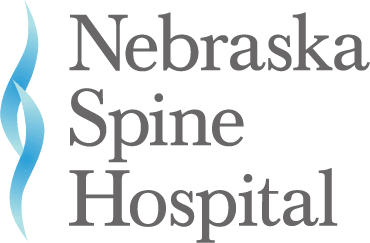Dr. Woodward discussed the use of IV acetaminophen for post back surgery pain in an article in the Omaha World Herald on February 6, 2014. IV acetaminophen is used after surgery to control pain without the side effects of narcotics.
The article is featured below and quotes Dr. Randall Woodward and Barb Barrett – a Nebraska Spine Hospital patient who was very happy with her surgery last year.
Hospitals go beyond narcotics to better manage patients’ pain
The federal health law is helping spur hospitals to change their surgical protocols.
Managing pain for surgical patients isn’t only about helping people feel better. It’s also about helping them get better, faster.
To recover quickly, most patients need to get moving as soon as possible after surgery. But relying solely on narcotics such as morphine, which dulls the pain, also can dull the patients, slowing their breathing and making them groggy or nauseated — generally not feeling much like moving.
Hospitals, with a push from the federal government, increasingly are paying more attention to how well they manage patients’ pain.
“You want to use a little of a lot of drugs, not a lot of any one drug, in pain management,” said Dr. Mark D’Agostino, chairman of the anesthesiology department at Methodist Hospital. “If I use high doses of narcotics to get control (of pain), I might be able to get control, but I’ve got a sleepy patient that either won’t breathe real deep, because narcotics do that, or is too sleepy to do their rehab.”
Pain management has become more important for hospitals with the passage of the Affordable Care Act . The law includes several initiatives calling for more pain-related research and education, and also ushered in Hospital Value-Based Purchasing. That program uses patients’ assessments of hospitals’ performance — including a question about how a patient’s pain was managed — as one of the many measures to calculate some of a hospital’s federal Medicare payments.
Results of the survey also are available by searching for “hospital compare” on the Medicare. gov website, allowing patients a chance to compare hospitals’ performance on such measures as hospital staff responsiveness, room cleanliness and pain management.
Because of the increased focus, “we are always looking for ways” to reduce patients’ pain and improve their overall hospital experience, said Dr. Myles Gart, an anesthesiologist who is chief quality officer at Immanuel Medical Center.
Barb Barrett of Council Bluffs was expecting pain and discomfort from a spinal-fusion surgery she was scheduled to undergo last year. Besides that, she said, the morphine that doctors gave her for the pain after previous surgeries on her spine left her with an upset stomach, nausea and a headache.
When Barrett was preparing for surgery at the Nebraska Spine Hospital on the Immanuel campus, a physician assistant told her they were going to give her a different pain medication — intravenous acetaminophen — instead of morphine.
Barrett was worried about how the surgery would go. “It was going to be a long procedure. I thought, ‘This is going to really hurt.’ ” The surgery, she said, took 11 hours and left her with a 2-foot-long incision in her back, plus two rods, 22 screws and a couple of hooks.
“I woke up (after surgery), and I was more aware of my surroundings. The next day, it didn’t seem like there was much of any pain at all. Just from that (acetaminophen). It was just as slick as could be. I was very pleased.”
Her spine surgeon, Dr. H. Randal Woodward, said patients usually get the IV acetaminophen, which is called Ofirmev, an hour or so before the end of the surgical procedure.
The drug can go directly to the brain, he said, instead of passing through the digestive system as it would with oral Tylenol. For most patients, Woodward said, “it works very well and that’s all they need. … I’m pleased with it.”
Gart said Immanuel is among many hospitals around the country that are looking for ways to decrease the use of narcotics given to patients during their hospital stays. One goal, he said, is to get away from a systemic approach to managing pain. One way to do that, he said, is to use a nerve block.
“Let’s say you’re having your shoulder worked on,” he said. “We know there are nerves that are coalescing at the base of your neck that go down into your shoulder, into your arm and into your hand. If we could inject local anesthetic into an area that could numb those nerves for a prolonged period of time, then we could have you wake up without having any pain from the surgery.”
The use of nerve blocks has evolved, Methodist’s D’Agostino said. In knee surgeries, for example, “We used to block the nerve that supplies the back of the leg and the nerve that supplies the front of the leg,” he said. “When you do that, the person can’t rehab very fast because when you block it, they can’t even move it. Not only can they not feel it, they can’t even move it.”
Orthopedic surgeons, he said, are deciding, “ ‘We want pain control, but I don’t think we’re going to accept zero sensation (anymore). Because that means their immobility is hurting their ability to recover.’ ” The use of “a little of a lot of drugs,” D’Agostino said, might mean a patient gets an anti-inflammatory drug, an oral narcotic and an anti-convulsant drug.
Managing pain, Gart said, is important not only because patients aren’t happy while they’re in pain but also because pain can change one’s vital signs. “It will increase your heart rate, increase your blood pressure. Physiologically, patients who have high blood pressure, diabetes, heart disease, when they have severe pain it could cause a domino effect and affect those other issues they have in a negative way.”
Helping patients deal with severe post-surgical pain also could help them later, D’Agostino said. “There is some data to say … when somebody has severe acute pain after an operation, they are set up for chronic pain in that same area. The word for it is ‘wind-up.’ ” When nerve cells are bombarded with painful stimuli, he said, they start to change the way they transmit information to the brain and produce different proteins. “They actually change the way they do business,” he said, “because they are getting this barrage of painful information.” The idea, therefore, is if you can prevent wind-up, you can prevent chronic pain.
Educating patients about the pain they might experience after surgery can help them better deal with it, said Melanie Simpson, the pain team coordinator at the University of Kansas Hospital in Kansas City, Kan. “Just telling people what to expect so their anxiety doesn’t go out of control,” said Simpson, a former board member of the American Society of Pain Management Nursing.
Drugs aren’t the only way surgical patients can deal with postoperative pain, said Karen Bever, a clinical nurse specialist at the Nebraska Medical Center. “There are so many alternative strategies you can do,” she said. Those strategies include massage therapy, relaxation, diversional activities, and physical and occupational therapy.
Those approaches aren’t necessarily a replacement for drugs, she said, but can be used in addition to medications.
Simpson, the Kansas pain team coordinator, said addressing patients’ pain is key to a good experience in the hospital. “Pain is kind of the low-hanging fruit. If we make people comfortable, everything about your stay is better.”

